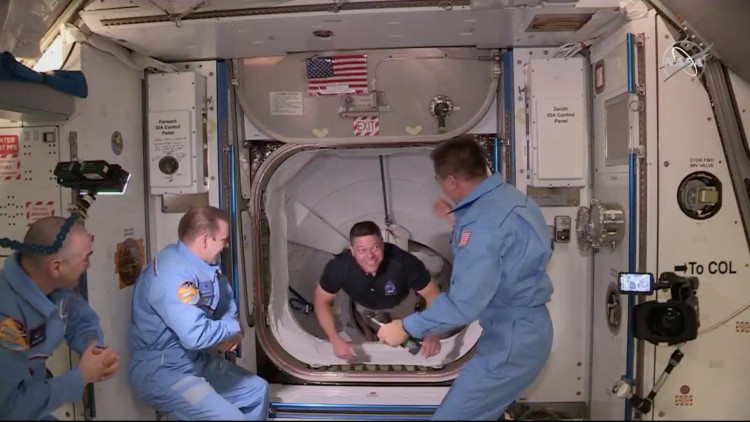When astronauts spend long periods of time in space, they often develop a vision impairment called spaceflight-associated neuro-ocular syndrome (SANS). Scientists are now designing an experimental vacuum-sealed sleeping bag to try to prevent this from happening.
Because there is no gravity in space, fluids circulate differently around the body and can float up into the head. This causes the optic nerve to expand and exerts pressure on the eyeballs, flattening them out. Microgravity literally reshapes the eyeballs, which is a horrible thing.
"This is perhaps one of the most mission-critical medical issues that has been discovered in the last decade for the space program," Benjamin Levine, a University of Texas Southwestern cardiologist working with NASA on addressing astronaut health risks, said in a news release.
Levine was a co-author on a new study published in the journal JAMA Opthalmology on Dec. 9 that looked into how a special, high-tech sleeping bag could help astronauts avoid SANS. Ten people were recruited to test the sack on Earth, five men and five women, climbing into bed and lying flat for three days.
They'd then lie flat for three more days, this time with the specialized sleeping sack attached from the waist down. The sack is essentially a suction bag that prevents body fluids from accumulating around the brain and eyes using a technique known as "lower body negative pressure."
Researchers on Earth noticed some changes in the shape of the eyeball after three days without the sack. Because of gravity, standing up usually helps relieve some of that pressure, but the patients were confined to 72 hours of horizontal stasis and were unable to do so.
However, spending just eight hours each night in the futuristic sleeping bag seemed to prevent eye changes.
While many of the issues associated with SANS appear to be resolved once astronauts return to Earth, dealing with the problem in space is essential for future, longer space missions. For example, getting to Mars and back takes much longer than the typical six-month stay on the space station.
"We don't know how bad the effects might be on a longer flight, like a two-year Mars operation," Levine said.
With crewed flights to Mars just around the corner (it's a two-decade horizon in space-time), resolving the SANS issue will allow astronauts to travel without worry.
It is now believed that, after more research, the technology will be used to ensure the safety of astronauts.




